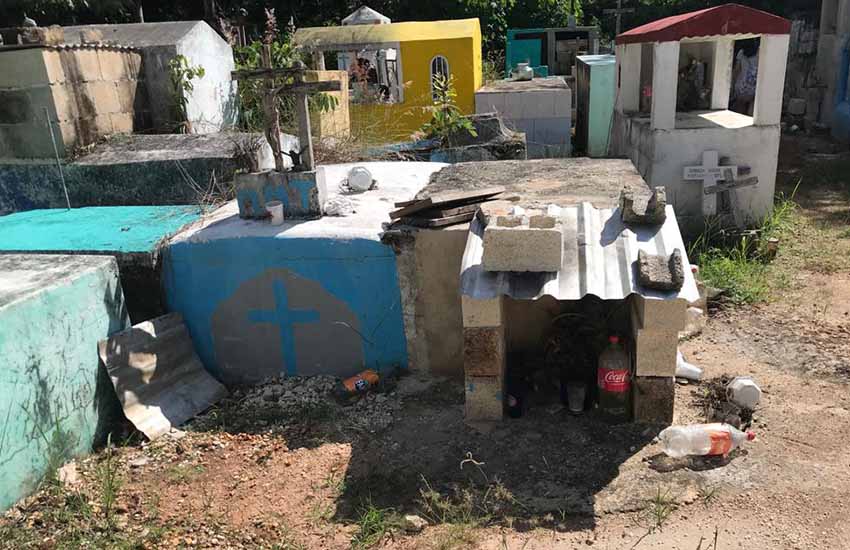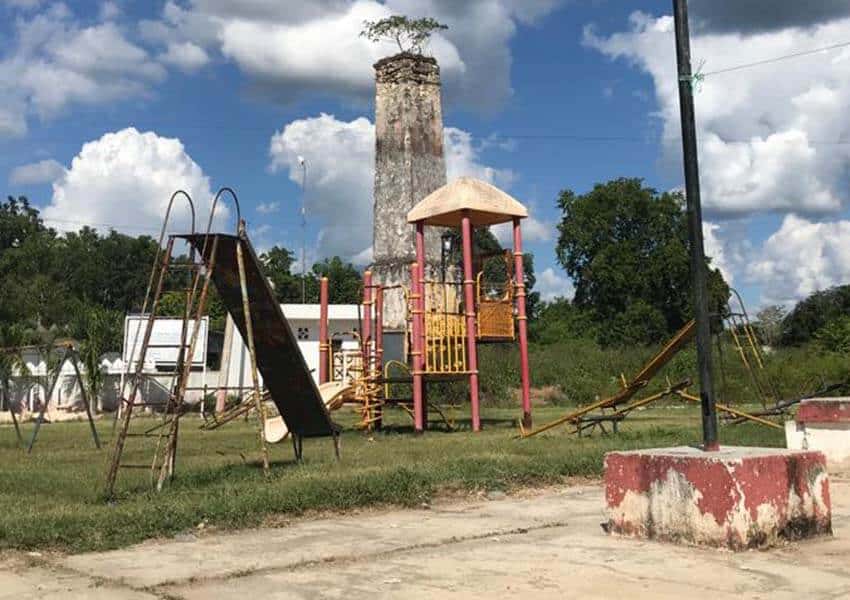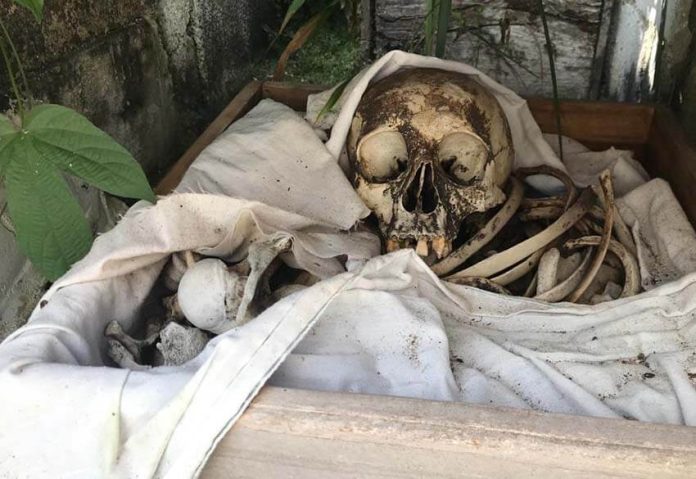“Day of the Dead here is not the way it used to be — Nilchí is not the way it used to be.”
Lucía Peniche has lived in the old hacienda town of Nilchí, 35 kilometers east of the city of Campeche, since she was born. Growing up, she took part in the annual Day of the Dead celebrations, notable for its bone washing tradition and for the culinary and social festival which took place around the start of November. These days, however, celebrating Day of the Dead is a muted affair here.
Families are fractured mostly across the capital city. Lucía lives alone with her elder sister, and family members visit when they can, with decreasing frequency. Cultural ceremonies, when they occur, are now largely outsourced to contracted priests, caterers and shamans rather than undertaken by residents.
The disintegration of this small, rural community is manifest in its appearance: increasing numbers of abandoned buildings choked with vegetation surround the square. The children’s play area contains disused swings in full sunlight, little else. Behind it, there is a 50-meter stone tower with a citrus tree growing, seemingly against the odds, at the very top.
“They tried to take [the tower] down with the rest of the hacienda to sell the stone for new buildings,” explains Lucía. “They tied wire around it and tried to pull it down with a truck, but it simply wouldn’t budge, so they just had to let it stand there. It’s a little piece of the town’s past that refuses to go away. Most everything else is long gone.”

Mostly. The truth is that the past in Nilchí is not entirely gone, although Lucía’s perception that it has disappeared is damning enough for the town and its future.
Some of what is left centers around Day of the Dead, which still holds a unique place in this town’s cultural life, primarily focused on the tradition of washing the bones of those recently departed. A visit at any time of the year, in fact, demonstrates this, with deceased ancestors on full display in the graveyard niches in the cemetery, usually made up of their bones wrapped in a sheet and placed in a wooden box.
Even this most unique of cultural traditions, however, has taken a hit in recent years with encroaching disarray as more of the dead are forgotten and tombs are unkempt.
“We don’t make the pibipollo [a centuries-old Maya dish of the Yucatán Peninsula made with chicken and homemade tortillas] ourselves anymore — somebody else usually comes in to do it,” says Lucía. “And if you want a priest to pray for your dead, you have to hire him, and then he’ll add you to the list.”
As Lucía tells of the slow strangulation of the tradition in this town, another community member wanders over from across the neglected children’s play area. She, too, has lived in Nilchí since she was born and remembers a time when Day of the Dead was an overwhelming event that each year reminded the community of the importance of its history and of where its members are all going.
She tells of the hacienda next to which she and Lucía are standing, in which she lived as a child and which year by year and piece by piece was dismantled so that the resources stored in the infrastructure could be used to tide the family over in hard times.

Pomuch, a community in the north of the state, is now internationally recognized for its bone washing tradition; people flock to the town for Day of the Dead to witness the act and to see the colorful graveyard in which the bones reside throughout the year.
Though the fears that the ancient Mayan tradition will be lost are prevalent even there, Pomuch is the preservation-of-tradition foil to Nilchí. The cemetery in which the ritual bone-cleaning takes place is large and well-maintained year-round. It attracts tourists from across the country who help fuel the local economy and perpetuate the importance of the Day of the Dead ceremonies, to the point that it increasingly exists as a kind of theme park.
By contrast, the graveyard in Nilchí is small, and no one outside the community comes to visit. They did not last year; they will not next year either. And looking around now, the feeling here is of a town at the edge of the known world — isolated, hidden in plain sight.
Before leaving the town, the graveyard draws you in one more time, as if its voices are calling to you in their loneliness. In one tomb, the bones of somebody’s beloved are simply lying on the ground surrounded by litter. The box in which they should have resided has disappeared, or maybe never existed in the first place because it cost someone too much.
Just outside the cemetery, a lone child hops onto a bench, running with a plastic bag containing a Coca-Cola bottle in one hand and a clinking pot of change in the other, the face of modernity in a disposable plastic bottle that infects the space where once stood a community.
Far from having departed, the dead and the forgotten, it seems, are walking here among us in small rural towns across the country.
Shannon Collins is an environment correspondent at Ninth Wave Global, an environmental organization and think tank. She writes from Campeche.
